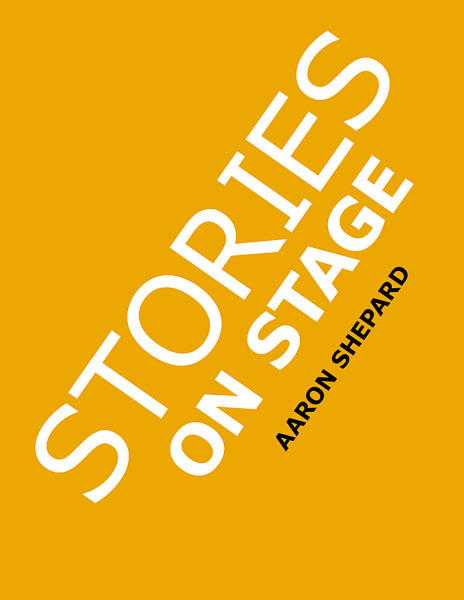Getting Started
About This Book
About the Scripts
About Staging
About the Web Site
Millions of Cats
By Wanda Gag
An old man has trouble making a choice when he finds a hill quite covered with cats.
GENRE: Fantasy
CULTURE: ——
THEME: Moderation; pride vs. humility
READERS: 9 or more
READER AGES: 7–11
LENGTH: 6 minutes
Harriet
By Florence Parry Heide
From Tales for the Perfect ChildHarriet was a very good whiner.
GENRE: Humor
CULTURE: American
THEME: Whining
READERS: 6
READER AGES: 7–11
LENGTH: 3 minutes
The Legend of Lightning Larry
By Aaron Shepard
A cowboy with a huge smile, a gun that shoots bolts of light, and a hankering for lemonade takes on Evil‑Eye McNeevil’s outlaw gang.
GENRE: Fables (original), tall tales, humor
CULTURE: American (Western frontier)
THEME: Peacemaking
READERS: 22 or more
READER AGES: 7–12
LENGTH: 8 minutes
Mr. Bim’s Bamboo
By Carol Farley
Mr. Bim’s shop faces hard times when his customers turn to new things.
GENRE: Fantasy
CULTURE: East Asian (general)
THEME: Tradition vs. modernity
READERS: 8
READER AGES: 8–12
LENGTH: 6 minutes
Three Sideways Stories From Wayside School
By Louis Sachar
From Sideways Stories from Wayside SchoolSome say the teachers and students at Wayside School are strange and silly—and so will you!
GENRE: Humor
CULTURE: American
THEME: Non-horizontal thinking
READERS: 9
READER AGES: 8–12
LENGTH: 12 minutes (½ + 3 + 4 + 4 + ½)
The Jade Stone
By Caryn Yacowitz
A stone carver must choose between obeying his emperor and obeying the stone he is given to carve.
GENRE: Folktales
CULTURE: Chinese (ancient)
THEME: Artistic process; artistic integrity
READERS: 11 or more
READER AGES: 8–12
LENGTH: 10 minutes
Talk
By Harold Courlander and George Herzog
From The Cow-Tail Switch, and Other West African StoriesA farmer’s day goes awry when he gets lip from a yam.
GENRE: Tall tales, folktales
CULTURE: African (western), Ashanti
THEME: Predictability
READERS: 15 or more
READER AGES: 8–15
LENGTH: 4 minutes
The Bean Boy
By Monica Shannon
From California Fairy TalesA farm boy with wayward shoelaces offers to find the dream of the Governor’s daughter.
GENRE: Fantasy
CULTURE: Californian (Spanish colonial), Irish-American
THEME: Determination; helpfulness
READERS: 8–10
READER AGES: 9–12
LENGTH: 8 minutes
How Tom Beat Captain Najork
By Russell Hoban
Tom won’t stop fooling around, so his aunt sends for Captain Najork to teach that boy a lesson.
GENRE: Humor
CULTURE: British
THEME: Value of play
READERS: 10
READER AGES: 9–13
LENGTH: 10 minutes
Tapiwa’s Uncle
By Nancy Farmer
When Uncle Zeka arrives in the city from his village, his attempts to be helpful don’t always work out.
GENRE: Humor
CULTURE: African (southeastern)
THEME: Cultural diversity
READERS: 7 or more
READER AGES: 9–13
LENGTH: 10 minutes
The Kid from the Commercial
By Stephen Manes
From It’s New! It’s Improved! It’s Terrible!Through Arnold’s broken TV screen comes a boy from a very different world.
GENRE: Humor
CULTURE: American
THEME: Commercialism; media manipulation
READERS: 5
READER AGES: 9–13
LENGTH: 5 minutes
The Fools of Chelm
By Steve Sanfield
From The Feather MerchantsWhere but in the town of Chelm could you find thinking that is so . . . creative?
GENRE: Folktales, noodlehead stories
CULTURE: Jewish (eastern European)
THEME: Logical pitfalls
READERS: 8 or 9
READER AGES: 9–15
LENGTH: 10 minutes
Mr. Twit’s Revenge
By Roald Dahl
From The TwitsTo get back at Mrs. Twit, Mr. Twit plays his nastiest trick ever.
GENRE: Humor
CULTURE: British
THEME: Revenge
READERS: 6
READER AGES: 9–15
LENGTH: 8 minutes
Mouse Woman and the Snails
By Christie Harris
From Mouse Woman and the Vanished PrincessesWhen Super-Snails enslave a princess, Mouse Woman has to help set things right.
GENRE: Myths, folktales
CULTURE: Native American (Pacific Northwest coast, U.S. and Canada)
THEME: Kindness to animals; pride vs. humility
READERS: 12 or more
READER AGES: 10–13
LENGTH: 16 minutes
Westwoods
By Eleanor Farjeon
From The Little BookroomYoung King John might have better luck finding a queen if he could only remember his poem.
GENRE: Fantasy
CULTURE: ——
THEME: Duty vs. dreams
READERS: 8 or more
READER AGES: 11 and up
LENGTH: 18 minutes
